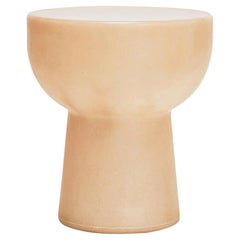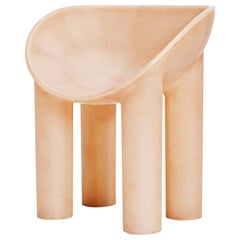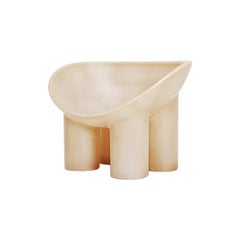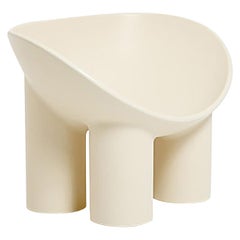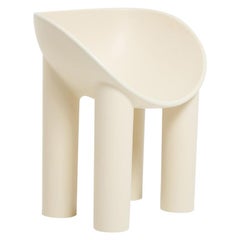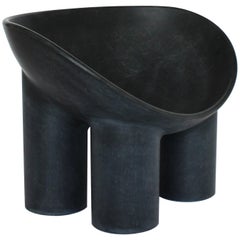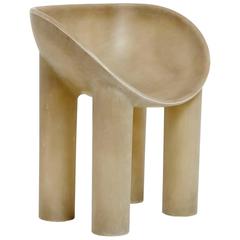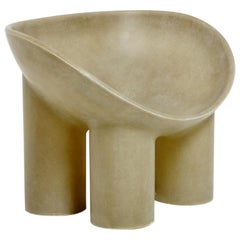Roly Poly Raw
21st Century and Contemporary English Daybeds
Fiberglass
21st Century and Contemporary English Stools
Fiberglass
21st Century and Contemporary English Dining Room Chairs
Fiberglass
2010s British Chairs
Fiberglass
2010s British Chairs
Fiberglass
2010s British Chairs
Fiberglass
2010s British Chairs
Fiberglass
Recent Sales
21st Century and Contemporary British Modern Chairs
Fiberglass
2010s British Chairs
Fiberglass
2010s British Other Stools
Fiberglass
People Also Browsed
Vintage 1930s German Art Deco Chandeliers and Pendants
Metal, Brass
Vintage 1960s Danish Scandinavian Modern Bookcases
Pine
Vintage 1980s Taiwanese Futurist Scientific Instruments
Plastic
Vintage 1950s Japanese Mid-Century Modern Floor Lamps
Bamboo, Paper
Vintage 1920s French Commodes and Chests of Drawers
Metal
21st Century and Contemporary Italian Benches
Cedar
2010s American Modern Console Tables
Brass
2010s Brazilian Chairs
Cord, Wood, Hardwood
Late 20th Century Japanese Primitive Side Chairs
Cedar
Vintage 1940s Italian Mid-Century Modern Lounge Chairs
Stainless Steel
Vintage 1920s German Industrial Wall Lights and Sconces
Brass
Early 20th Century French Doors and Gates
Wrought Iron
21st Century and Contemporary American Organic Modern Chandeliers and Pe...
Organic Material
Vintage 1970s Italian Brutalist Chandeliers and Pendants
Wrought Iron
Mid-20th Century American Mid-Century Modern Lounge Chairs
Zinc
Vintage 1950s Danish Scandinavian Modern Stools
Leather, Rosewood
Roly Poly Raw For Sale on 1stDibs
How Much is a Roly Poly Raw?
Faye Toogood for sale on 1stDibs
Faye Toogood’s name is practically synonymous with her Roly Poly chair. With its chubby legs and bowl-like seat, the now-iconic piece epitomized the trend toward chunky forms that defined avant-garde furniture design in the 2010s. But the visionary British artist’s contributions go far beyond the chair and its similarly robust companion pieces, in disciplines ranging from textiles and ceramics to fashion and home interiors.
“I design holistically, with an overall vision across fashion, furniture and interiors,” she tells 1stDibs. “Furniture is something I return to over and over again and is a very strong part of this vision. I am interested in humans and the way they live — the spaces they inhabit, the clothes they wear, the objects they surround themselves with.”
After a childhood spent running free in the English countryside with nature as her playground, Toogood studied art history at Bristol University rather than attend art school. Her design approach is underpinned by contrast and understandably informed by art history, particularly the mid-20th-century modernism of such British artists as Barbara Hepworth and Alfred Wallis. “For me, it is about playing around with references and our associations, be that with materials or the precious and the raw, the masculine and the feminine,” she explains. “I’m able to use those contrasts to create friction.”
Toogood has exhibited at Phillips and the Victoria & Albert Museum in London, the Triennale in Milan and D Museum in Seoul. In addition, her works are in the permanent collections of institutions worldwide, including the Philadelphia Museum of Art; Dallas Museum of Art; Denver Art Museum; High Museum of Art, in Atlanta; Corning Museum of Glass, in New York; the National Gallery of Victoria, in Melbourne; and the Fabergé Museum in St. Petersburg.
Shop furniture designs from Faye Toogood today on 1stDibs.
Finding the Right Seating for You
With entire areas of our homes reserved for “sitting rooms,” the value of quality antique and vintage seating cannot be overstated.
Fortunately, the design of side chairs, armchairs and other lounge furniture — since what were, quite literally, the early perches of our ancestors — has evolved considerably.
Among the earliest standard seating furniture were stools. Egyptian stools, for example, designed for one person with no seat back, were x-shaped and typically folded to be tucked away. These rudimentary chairs informed the design of Greek and Roman stools, all of which were a long way from Sori Yanagi's Butterfly stool or Alvar Aalto's Stool 60. In the 18th century and earlier, seats with backs and armrests were largely reserved for high nobility.
The seating of today is more inclusive but the style and placement of chairs can still make a statement. Antique desk chairs and armchairs designed in the style of Louis XV, which eventually included painted furniture and were often made of rare woods, feature prominently curved legs as well as Chinese themes and varied ornaments. Much like the thrones of fairy tales and the regency, elegant lounges crafted in the Louis XV style convey wealth and prestige. In the kitchen, the dining chair placed at the head of the table is typically reserved for the head of the household or a revered guest.
Of course, with luxurious vintage or antique furnishings, every chair can seem like the best seat in the house. Whether your preference is stretching out on a plush sofa, such as the Serpentine, designed by Vladimir Kagan, or cozying up in a vintage wingback chair, there is likely to be a comfy classic or contemporary gem for you on 1stDibs.
With respect to the latest obsessions in design, cane seating has been cropping up everywhere, from sleek armchairs to lounge chairs, while bouclé fabric, a staple of modern furniture design, can be seen in mid-century modern, Scandinavian modern and Hollywood Regency furniture styles.
Admirers of the sophisticated craftsmanship and dark woods frequently associated with mid-century modern seating can find timeless furnishings in our expansive collection of lounge chairs, dining chairs and other items — whether they’re vintage editions or alluring official reproductions of iconic designs from the likes of Hans Wegner or from Charles and Ray Eames. Shop our inventory of Egg chairs, designed in 1958 by Arne Jacobsen, the Florence Knoll lounge chair and more.
No matter your style, the collection of unique chairs, sofas and other seating on 1stDibs is surely worthy of a standing ovation.

